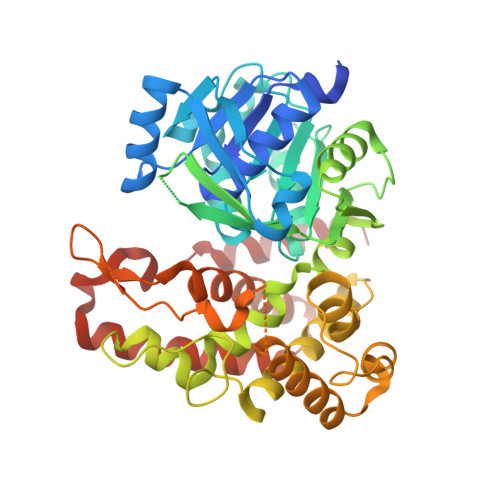Staphylopine, pseudopaline, and yersinopine dehydrogenases: A structural and kinetic analysis of a new functional class of opine dehydrogenase.
McFarlane, J.S., Davis, C.L., Lamb, A.L.(2018) J Biol Chem 293: 8009-8019
- PubMed: 29618515
- DOI: https://doi.org/10.1074/jbc.RA118.002007
- Primary Citation of Related Structures:
6C4L, 6C4M, 6C4N, 6C4R, 6C4T - PubMed Abstract:
Opine dehydrogenases (ODHs) from the bacterial pathogens Staphylococcus aureus , Pseudomonas aeruginosa , and Yersinia pestis perform the final enzymatic step in the biosynthesis of a new class of opine metallophores, which includes staphylopine, pseudopaline, and yersinopine, respectively. Growing evidence indicates an important role for this pathway in metal acquisition and virulence, including in lung and burn-wound infections ( P. aeruginosa ) and in blood and heart infections ( S. aureus ). Here, we present kinetic and structural characterizations of these three opine dehydrogenases. A steady-state kinetic analysis revealed that the three enzymes differ in α-keto acid and NAD(P)H substrate specificity and nicotianamine-like substrate stereoselectivity. The structural basis for these differences was determined from five ODH X-ray crystal structures, ranging in resolution from 1.9 to 2.5 Å, with or without NADP + bound. Variation in hydrogen bonding with NADPH suggested an explanation for the differential recognition of this substrate by these three enzymes. Our analysis further revealed candidate residues in the active sites required for binding of the α-keto acid and nicotianamine-like substrates and for catalysis. This work reports the first structural kinetic analyses of enzymes involved in opine metallophore biosynthesis in three important bacterial pathogens of humans.
Organizational Affiliation:
Department of Molecular Biosciences, University of Kansas, Lawrence, Kansas 66045.














